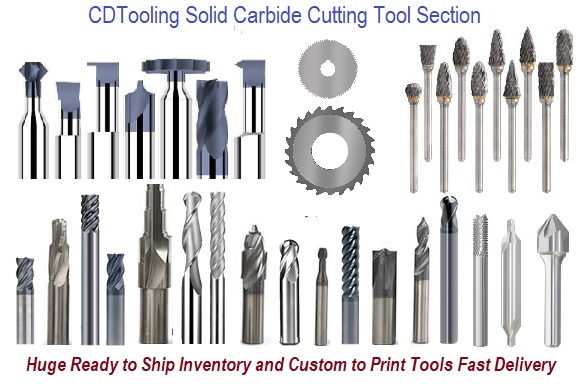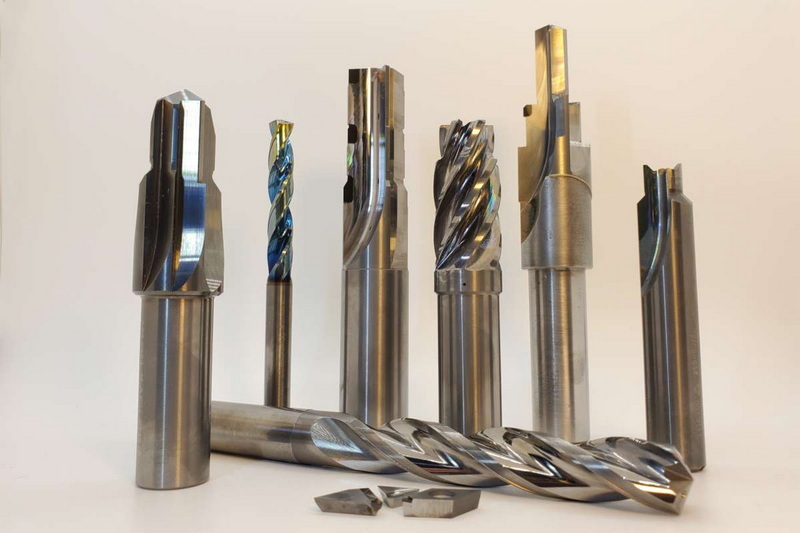Content Menu
● Introduction to Carbide Products
>> Carbide Products Meaning
● Applications of Carbide Products
>> 1. Cutting Tools and Machining
>> 2. Mold Manufacturing
>> 3. Mining and Drilling Operations
>> 4. Oil and Gas Exploration
>> 5. Aerospace Industry
>> 6. Military and Firearms
>> 7. Construction and Building Materials
>> 8. Automotive Industry
>> Advanced Applications of Carbide Products
● Manufacturing Process of Carbide Products
>> Steps in Manufacturing Carbide Products
● Advantages of Carbide Products
● Environmental Impact of Carbide Products
● Conclusion
● Frequently Asked Questions
>> 1. What is the meaning of carbide products?
>> 2. How are carbide products used in the mining industry?
>> 3. What are the advantages of using carbide products in manufacturing?
>> 4. How are carbide products manufactured?
>> 5. What industries benefit from carbide products?
● Citations:
Carbide products, particularly those made from tungsten carbide, are renowned for their exceptional hardness and wear resistance, making them indispensable in various industrial applications. These products are used across sectors such as manufacturing, military, metallurgy, oil and gas drilling, mining tools, and construction. In this article, we will delve into the meaning of carbide products, their applications, and how they contribute to efficiency and precision in different industries.

Introduction to Carbide Products
Carbide products are typically made from a mixture of tungsten carbide (WC) and a binding agent, usually cobalt (Co), which enhances their strength and durability. This combination allows carbide materials to maintain their hardness even at high temperatures, making them ideal for demanding industrial tasks.
Carbide Products Meaning
The term "carbide products" refers to materials and tools manufactured from carbides, such as tungsten carbide, which are known for their high hardness and resistance to wear. These products are used in a wide range of applications where durability and precision are crucial.
Applications of Carbide Products
1. Cutting Tools and Machining
Carbide products are extensively used in the production of cutting tools such as drills, milling cutters, and saw blades. Their high hardness and wear resistance enable these tools to efficiently cut through difficult-to-machine materials like steel, titanium, and even tungsten carbide itself.
Carbide cutting tools are essential for maintaining sharpness and precision at high cutting speeds.
2. Mold Manufacturing
In mold manufacturing, carbide products are used to create molds for plastic injection molding and metal forming. These molds require high precision and durability, which carbide provides, allowing for the production of high-quality parts in large quantities.
Carbide molds are crucial for maintaining precision and durability in manufacturing processes.
3. Mining and Drilling Operations
The mining and drilling industries rely heavily on carbide products for their tools. Drill bits and cutting blades made from tungsten carbide are capable of withstanding the harsh conditions of mining environments, providing durability and efficiency in operations.
Tungsten carbide drill bits are essential for drilling through hard rock and minerals.
4. Oil and Gas Exploration
In the oil and gas sector, carbide products are used in rock drilling tools and mechanical drilling components. Their high temperature and corrosion resistance enhance the efficiency and lifespan of drilling equipment.
Carbide components in oil and gas drilling equipment provide resistance to erosion and corrosion.
5. Aerospace Industry
The aerospace industry utilizes carbide products for engine components and structural parts due to their strength, resistance to fatigue, and minimal weight.
Carbide components in aerospace applications require high strength and resistance to extreme conditions.
6. Military and Firearms
In military and firearms applications, tungsten carbide is used for barrel linings, armor-piercing projectile cores, and precision components. Its high hardness and wear resistance enhance the service life and performance of these components.
Carbide components in firearms improve durability and accuracy.
7. Construction and Building Materials
In the construction industry, carbide products are used for wear-resistant components in machinery and tools, such as saw blades and drill bits. These tools are essential for cutting through concrete, stone, and other building materials efficiently.
Carbide tools in construction enhance the efficiency of building processes.
8. Automotive Industry
The automotive industry utilizes carbide products for wear-resistant components in machinery and tools. Carbide is used in the production of engine components, gearboxes, and other parts where high durability is required.
Carbide products also play a role in the manufacturing of automotive parts, such as in cutting tools and molds for plastic and metal components.
Advanced Applications of Carbide Products
Recent advancements in carbide technology have led to their use in advanced applications such as:
- High-Speed Machining: Carbide tools are optimized for high-speed machining operations, allowing for faster production rates without compromising tool life.
- Advanced Materials Processing: Carbide products are used in processing advanced materials like composites and ceramics, where traditional tools would fail due to wear.

Manufacturing Process of Carbide Products
The manufacturing process of carbide products involves mixing tungsten carbide powder with a binding agent, typically cobalt, and then pressing the mixture under high pressure. The final shape is achieved through sintering in a hot furnace.
Steps in Manufacturing Carbide Products
1. Powder Preparation: Tungsten carbide powder is mixed with cobalt.
2. Pressing: The mixture is pressed into the desired shape under high pressure.
3. Sintering: The pressed shape is heated in a furnace to create the final product.
Sintering is crucial for creating the final carbide product with desired properties.
Advantages of Carbide Products
- High Hardness: Carbide products are among the hardest materials, making them ideal for cutting and drilling operations.
- Wear Resistance: They maintain their shape and functionality over time, reducing the need for frequent replacements.
- Heat Resistance: Carbide retains its hardness at high temperatures, making it suitable for high-speed machining.
Environmental Impact of Carbide Products
The manufacturing of carbide products has environmental implications, such as the release of particulate matter during the sintering process and the use of energy-intensive processes. However, advancements in technology are aimed at reducing these impacts through more efficient manufacturing methods and waste management practices.
Conclusion
Carbide products, particularly those made from tungsten carbide, are vital components in various industrial sectors due to their exceptional hardness and wear resistance. Their applications span from cutting tools and mold manufacturing to mining, oil and gas drilling, aerospace, military, construction, and automotive uses. Understanding the meaning and applications of carbide products highlights their importance in enhancing efficiency and precision across different industries.

Frequently Asked Questions
1. What is the meaning of carbide products?
- Carbide products refer to materials and tools made from carbides, such as tungsten carbide, known for their high hardness and wear resistance. These products are used in various industrial applications where durability and precision are crucial.
2. How are carbide products used in the mining industry?
- Carbide products are used in the mining industry for drill bits, cutting tools, and wear parts. Their high hardness and wear resistance make them ideal for withstanding the harsh conditions of mining environments.
3. What are the advantages of using carbide products in manufacturing?
- The advantages include high hardness, wear resistance, and heat resistance. These properties allow carbide tools to maintain their sharpness and functionality over time, reducing the need for frequent replacements.
4. How are carbide products manufactured?
- Carbide products are manufactured by mixing tungsten carbide powder with a binding agent like cobalt, pressing the mixture into the desired shape, and then sintering it in a hot furnace to create the final product.
5. What industries benefit from carbide products?
- Industries that benefit from carbide products include manufacturing, mining, oil and gas drilling, aerospace, military, construction, and automotive. These sectors utilize carbide for its durability and precision in various applications.
Citations:
[1] https://www.carbide-products.com/blog/what-is-carbide-used-for/
[2] https://www.sollex.se/en/blog/post/about-cemented-tungsten-carbide-applications-part-1
[3] https://eurobalt.net/blog/2020/10/14/tungsten-carbide-components/
[4] https://www.vecteezy.com/free-photos/carbide
[5] https://www.alamy.com/stock-photo/carbide-inserts.html
[6] https://www.istockphoto.com/photos/tungsten-carbide
[7] https://www.durit.com/industries
[8] https://www.carbide-products.com/blog/applications-of-carbide/
[9] https://eurobalt.net/blog/2020/03/23/tungsten-carbide-components-for-drilling-and-mining-equipment/
[10] https://www.istockphoto.com/photos/carbide
[11] https://www.scmtstool.com/blog/What-Are-the-Industrial-Applications-of_bid-316545588.html
[12] https://carbideprovider.com/carbide-for-mining-tools-20241226/
[13] https://www.gettyimages.com.au/photos/tungsten-carbide
[14] https://en.wikipedia.org/wiki/Carbide
[15] https://www.mmc-carbide.com/us/technical_information/tec_guide/tec_guide_carbide
[16] https://eurobalt.net/blog/2022/03/28/all-the-applications-of-tungsten-carbide/
[17] https://www.basiccarbide.com/mining-industry-carbide/
[18] https://www.manufacturingtomorrow.com/article/2019/08/5-ways-carbide-metal-compound-is-used-in-the-manufacturing-industry/13794
[19] https://www.tungco.com/insights/blog/5-tungsten-carbide-applications/
[20] https://chinacarbide.en.made-in-china.com/product/dyzQDmkrCWcK/China-Mining-Carbide-Tools-for-Coal-Mining-Industry.html
[21] https://www.britannica.com/science/carbide
[22] https://www.worldconstructiontoday.com/news/tungsten-carbide-pellets-common-uses-industrial-applications/
[23] https://www.enduraclad.com.au/mining-mineral-processing
[24] https://www.sciencedirect.com/topics/materials-science/carbide
[25] https://fmcarbide.com/blogs/techtalks/uses-for-carbide
[26] https://www.istockphoto.com/photos/carbide-tools?page=2
[27] https://stock.adobe.com/search/images?k=carbide+cutting
[28] https://www.gettyimages.com.au/photos/calcium-carbide
[29] https://stock.adobe.com/search?k=%22carbide+tools%22
[30] https://www.shutterstock.com/search/carbide-cutting-tool
[31] https://www.shutterstock.com/search/carbide
[32] https://www.gwstoolgroup.com/understanding-the-different-types-of-carbide-in-cutting-tools/
[33] https://stock.adobe.com/search?k=carbide
[34] https://stock.adobe.com/search?k=tungsten+carbide
[35] https://www.gettyimages.com.au/photos/carbide
[36] https://carbidetools.nz/gallery/
[37] https://www.alamy.com/stock-photo/calcium-carbide.html
[38] https://www.istockphoto.com/photos/carbide-tools
[39] https://www.shutterstock.com/search/carbide-tools
















